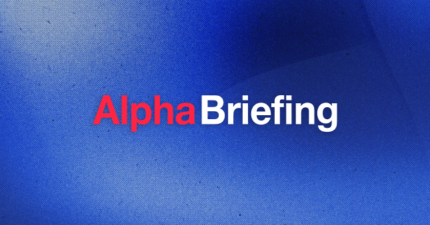Token Issuance: What Is It and How Does It Work?
Token issuance is a key aspect of the blockchain ecosystem. It involves creating and distributing new digital assets, often referred to as crypto tokens, that holders can use within specific cryptocurrency networks.
This process is essential because it enhances asset liquidity. Businesses can tokenize physical assets like commodities and securities, making them more accessible to a larger pool of potential investors.
Through the issuance of tokens, you can access new investment opportunities and play a role in the development of the cryptocurrency landscape. This article explains what crypto tokens are, how they’re issued, and important considerations to keep in mind.
What Are Crypto Tokens?
Crypto tokens are digital assets created on a blockchain. They’re distinct from cryptocurrencies like Bitcoin (BTC) or Ethereum (ETH), which function as digital money. Instead, tokens represent various assets or rights and are used within specific blockchain-based ecosystems.
These tokens can serve multiple purposes. Some are utility tokens, giving you access to a product or service. For instance, you might use a token to pay for transaction fees on a blockchain network.
Another type is security tokens, which represent ownership of an asset, like shares in a company. These are typically subject to stringent regulations.
Tokens play a big part in the blockchain environment. They make decentralized applications (dApps) function by facilitating transactions and granting access. This enhances efficiency and trust within the system.
New tokens are created through a process called token issuance, which involves generating new tokens on existing blockchains.
These new tokens are then distributed or sold to users to be used within their intended ecosystems.
Understanding the different types of crypto tokens helps you grasp their potential uses and benefits. Crypto tokens also require careful handling and awareness of their specific functions. They bridge the gap between digital and real-world assets, giving you new ways to interact with technology.
How Are These Tokens Issued?
Issuing tokens is a multifaceted process involving both technical and business considerations.
The technical process of issuing tokens looks like this:
- Blockchain selection: The first step in token issuance is selecting the appropriate blockchain platform. Popular choices include Ethereum and Binance Smart Chain. Each platform has its own set of standards and protocols, which influence the token’s features and capabilities.
- Smart contract development: Tokens are created through smart contracts, which are self-executing contracts with the terms of the agreement directly written into code. Developers write smart contracts using programming languages like Solidity (for Ethereum) or Vyper. These contracts define the total supply of tokens, the issuance process, and other rules governing the tokens.
- Token standards implementation: To ensure interoperability and functionality, tokens must adhere to specific standards. For example, ERC-20 is a widely used standard for fungible tokens on the Ethereum blockchain, while ERC-721 is used for non-fungible tokens (NFTs). Implementing these standards involves coding specific functions and attributes into the smart contract.
- Deployment to blockchain: Once the smart contract is developed and tested, it’s deployed to the blockchain network. This process involves submitting the contract to the network, where it’s verified and added to the blockchain. The deployment process incurs a fee, known as gas on Ethereum, which you’ll pay in the blockchain‘s native cryptocurrency.
The business process is as follows:
- Regulatory compliance: Before issuing tokens, you need to ensure compliance with relevant regulations. This includes adhering to securities laws, Anti-Money Laundering (AML) regulations, and Know Your Customer (KYC) requirements. Engaging legal experts to navigate these regulations is essential.
- Tokenomics design: Tokenomics refers to the economic model behind the token, including its distribution, utility, and incentives. A well-designed tokenomics plan ensures the token has value and utility, incentivizing user engagement and adoption.
- Marketing and community building: Effective marketing strategies and community engagement are critical for successful tokenization. This includes creating a compelling narrative around the token, leveraging social media, conducting airdrops, and engaging with potential investors and users.
- Launch and distribution: The final step is launching the token to the public. You can do this through various models, such as Initial Coin Offerings (ICOs), Security Token Offerings (STOs), or direct listing on cryptocurrency exchanges. The distribution of tokens involves allocating tokens to investors, users, and stakeholders according to the predefined tokenomics plan.
AlphaPoint’s white-label asset digitization tool provides a comprehensive solution for issuing tokens. This platform simplifies the process by offering a user-friendly interface and robust backend infrastructure.
Various Token Issuance Models
There are a few different token issuance: ICOs, STOs, token airdrops, and blockchain forks. Each model has its own unique process and implications for investors and startups.
ICOs (Initial Coin Offerings)
ICOs are one of the most popular methods for startups to raise funds. They allow investors to purchase new cryptocurrency tokens in exchange for established cryptocurrencies like Ethereum. This method gives startups a way to gather capital quickly.
ICOs are especially useful for projects on the Ethereum network. Issuers generally sell the tokens before fully developing the project, which means investors are betting on the project’s future success.
Due to their unregulated nature, ICOs carry high risks for investors but can yield substantial returns if the project succeeds.
STOs (Security Token Offerings)
STOs provide a more regulated approach to token issuance. Unlike ICOs, STOs comply with securities regulations, making them less risky for investors. These tokens represent ownership in an asset, like shares in a company, and are often backed by real assets.
The strict regulatory framework helps build trust among investors. STOs can cater to traditional investors who might be wary of the unregulated nature of ICOs. They provide a bridge between traditional finance and the crypto world by offering more security and transparency.
Token Airdrops
Token airdrops involve distributing free tokens to holders of an existing cryptocurrency. Issuers often use this method to attract attention and build a user base for a new project. It’s also a strategy to reward loyal community members and incentivize them to promote the project.
Airdrops also serve as a marketing tactic, as they increase awareness and adoption of a new token. Token issuers typically announce airdrops on social media platforms and crypto forums, ensuring widespread coverage.
While airdrops are free, the recipients might need to perform tasks, like sharing posts or signing up for newsletters, to receive their tokens.
Blockchain Forks
Blockchain forks occur when a cryptocurrency‘s existing blockchain is split into two separate chains, creating a new token. Forks can be hard or soft, depending on whether the change is backward-compatible.
Hard forks create a new, distinct cryptocurrency. Examples include Bitcoin Cash, which was created from a fork of the Bitcoin blockchain.
Forks can also be contentious and arise from disagreements within the community about the direction of the project. They provide new tokens to existing holders, typically mirroring their holdings on the original blockchain.
What Are Token Standards?
Token standards are vital for ensuring that tokens on blockchain networks are interoperable and functional. They provide specific rules for how tokens are created, issued, and managed.
ERC-20
The ERC-20 token standard is widely used for fungible tokens on the Ethereum blockchain. Fungible tokens are interchangeable and identical to each other, like traditional money.
ERC-20 tokens are used for cryptocurrencies, utility tokens for apps, and rewards programs. They allow for easy interoperability across wallets and exchanges, making them highly convenient.
The standard sets rules for functions like transferring tokens, checking balances, and approving spending. ERC-20 tokens are critical for decentralized applications (dApps) since they simplify many blockchain interactions.
ERC-721
ERC-721 is the standard for non-fungible tokens (NFTs) on the Ethereum blockchain. Unlike ERC-20, each ERC-721 token is unique and not interchangeable with any other token.
NFTs are perfect for representing ownership of unique assets, such as digital art, real estate deeds, and collectibles. Each token has metadata that provides information about the asset it represents.
ERC-721 tokens have opened new avenues in digital ownership and creativity. They’re supported by major platforms and marketplaces, allowing users to buy, sell, and trade unique digital assets securely.
BEP-20
BEP-20 is the token standard for the Binance Smart Chain (BSC). It is similar to Ethereum‘s ERC-20 but adapted to BSC’s environment. BEP-20 tokens can serve as cryptocurrency, stablecoins, and utility tokens. They’re designed for efficiency and lower transaction fees.
Developers find the BEP-20 standard easy to work with, due to its compatibility with existing protocols. This standard enhances the functionality and utility of tokens within the Binance ecosystem, making them easy to integrate with different applications and services.
Important Things To Keep in Mind
When issuing tokens, you should focus on regulatory compliance, investor protection, smart contract security, and market fluctuations. These factors ensure the success and sustainability of your token issuance.
Compliance With Regulations
Adhering to relevant laws and regulations is crucial. Each country has its own set of rules for cryptocurrencies and tokens, and the legal requirements in one country can be quite different from another. You also need to understand regulations like AML and KYC to avoid legal issues.
Obtaining a legal opinion from a crypto expert can provide clarity on whether your token is categorized as a security, utility, or payment token, which has significant implications.
Engaging with legal experts early in the process can help you navigate complex regulatory environments and avoid potential pitfalls. Regularly updating these legal understandings and maintaining compliance as regulations evolve can prevent future complications.
Protection for Investors
Protecting your investors is a top priority, as is clear communication and transparency about their investments. By prioritizing investor protection, you’ll build a loyal investor base and enhance the credibility of your token issuance.
For instance, security tokens offer investors ownership stakes, while utility tokens provide access to a product or service. Providing detailed information on the expected value and potential risks of the token is important. Ensuring that investors understand the terms and conditions, as well as any lock-up periods or withdrawal limits, can help protect their investment and your reputation.
Establishing a robust investor protection framework can also enhance trust. You can take measures like setting up escrow accounts, providing insurance for investor funds, and implementing mechanisms for dispute resolution.
Security of Smart Contracts
The security of your smart contracts is vital to prevent hacking and fraud. Regular updates and maintenance of the smart contracts keeps them secure against threats. Smart contracts automate transactions and store data on the blockchain, making them attractive targets for cybercriminals.
Conduct thorough code audits and vulnerability assessments and use an established token issuance platform to ensure robust security. Engaging with experienced developers can help you identify and mitigate potential security risks.
Fluctuations in the Market
Understanding market demand and value fluctuations is also important during token issuance. Cryptocurrencies are known for their volatility, which can affect the token’s value significantly.
Monitoring market trends and assessing your target audience’s interest can provide you with much-needed insights. You should have a strategy for dealing with price swings to protect your investors and maintain the token’s stability. Integrating mechanisms like liquidity pools can help you manage market fluctuations and ensure easier buying and selling of tokens.
By focusing on these key factors, you can better navigate the complexities of token issuance and create a secure, compliant, and successful offering.
Why Choose AlphaPoint for Token Issuance Infrastructure
AlphaPoint provides robust white-label software solutions you can use to build your own tokenized assets platform. Our comprehensive solutions deliver enterprise-grade security and compliance to help you protect your assets and meet regulatory standards.
By leveraging advanced exchange technology, AlphaPoint facilitates a platform for trading tokenized RWAs STOs, enhancing asset liquidity. We also enable the seamless creation and management of smart contracts for automated, accurate processes.
See how AlphaPoint’s transformative technology enables seamless token issuance — request a demo today.
About the author
Matthew Moss, Director of Product at AlphaPoint, drives innovation for its digital assets infrastructure and white-label trading platform, leveraging over 20 years of expertise in financial services and digital trading systems. Connect with him on LinkedIn.


